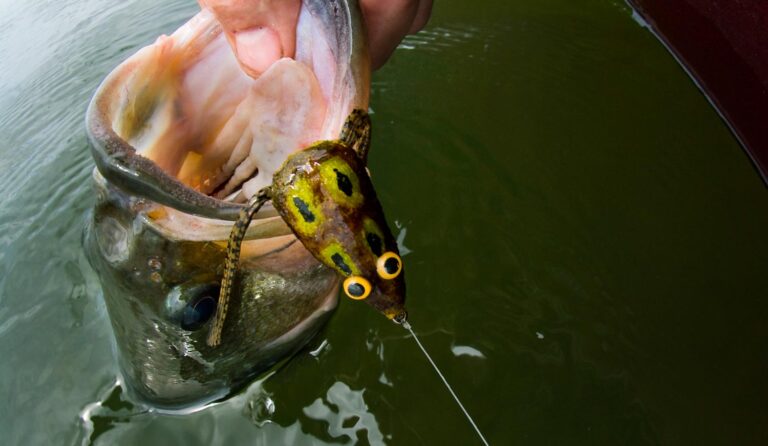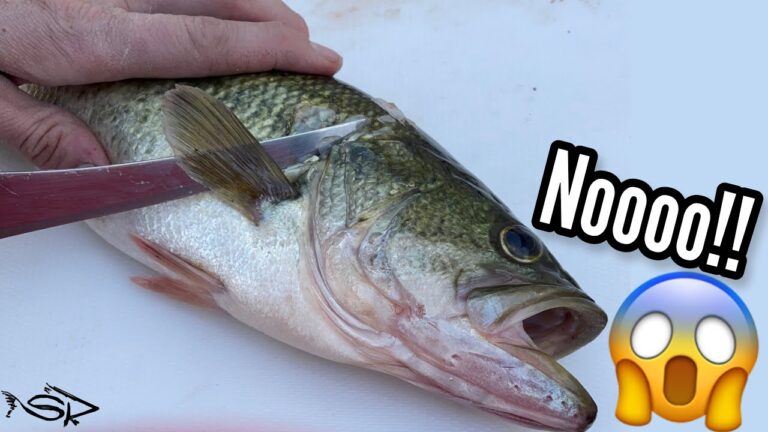How Fast Do Bass Grow

Largemouth bass typically grow about one inch per month. Growth rates can vary due to factors like food availability and water conditions.
Understanding the growth patterns of bass is essential for both anglers and aquaculturists. These popular game fish are sought after for their impressive size and spirited fight when hooked. Bass growth rates are influenced by environmental conditions, with optimal water temperature and abundant prey leading to quicker growth.
Anglers and fish farmers alike need to be aware of the factors affecting their development to ensure a healthy and sustainable bass population. Knowing the habits and needs of bass can lead to more effective fishing strategies and fishery management practices, preserving the species for future generations to enjoy. Proper knowledge about bass growth rates can enhance the angling experience and support ecological balance within freshwater ecosystems.
Growing Up Bass: A Journey Through Sizes
At the Initial Fry Stage, baby bass, or ‘fry’, are extremely small. They lack true scales and fins. Despite their tiny size, fry grow quickly. Every day matters as they seek out microscopic food sources. Protection is scarce; size is survival. Rapid growth is key for young fry.
As fry become juveniles, the growth spurts are remarkable. Ample food and right temperatures mean juveniles can sometimes grow up to 2 inches a month. This stage is crucial. It sets the stage for their adult lives. Larger juveniles are less vulnerable to predators. They ensure stronger lineage for the species. Water quality and competition play big roles in their growth rates.
Factors Influencing Bass Growth Rates
Water temperature greatly affects bass growth rates. Warm waters speed up metabolism, leading to faster growth.
- Bass grow quickly in 75-85°F
- Colder temperatures slow down growth
Diet is key for hefty bass. Protein-rich foods boost growth. Bass thrive on crayfish, shad, and bluegill.
| Food Source | Effect on Growth |
|---|---|
| High protein diet | Increases size faster |
| Poor diet | Results in smaller size |
Lastly, habitat and population shape growth. Lush habitats with less competition support bigger bass. Ponds offer perfect conditions for growth.
Bass Growth: A Seasonal Perspective
Bass growth varies with seasons due to food availability and water temperatures. During Spring Surge, young bass find plenty of food, which makes them grow quickly. This period is crucial for their development. Warm waters stimulate their metabolism, leading to more eating and faster growth.
Once Summer Stamina kicks in, bass growth rates slow down a bit. The reason is the stabilization of water temperatures. Bass might find food harder to catch but they still grow at a steady rate. It’s important for bass to build up energy reserves during this time.
In contrast, Winter Slowdown sees bass growth rates dropping. Cold water slows their metabolism. Less food is available and bass become less active. They conserve energy, which means less growth until spring returns.

Credit: www.mossyoak.com
Species-specific Growth Variations
The growth rate of Largemouth Bass differs by lake and forage availability. They can hit 4-12 inches in their first year, depending on conditions. These fish typically reach full maturity by age 5 or 6, measuring approximately 16 inches in length. By year three, a healthy Largemouth Bass can often weigh over 2 pounds. Survival rates, climate, and population density also impact growth pace.
Smallmouth Bass grow slower than their Largemouth counterparts, reaching just about 6-8 inches at the one-year mark. Their growth accelerates by the second year, gaining another 2-3 inches, and they often weigh over a pound. Full maturity for Smallmouth Bass comes around 6 to 7 years, where they tip scales at over 3 pounds and span 12-16 inches long.
Measuring Up: Methods To Gauge Bass Growth
Measuring bass growth needs good methods. Age analytics help us understand their growth rate. We look at two things: how old they are and how big they get. Each year, bass get rings on their bones, like trees. We count these rings to find their age.
To measure how big they get, we use size sampling techniques. Scientists catch bass and measure them. They measure from head to tail. This tells us how fast bass can grow. The data helps us make sure bass stay healthy in lakes and rivers.
| Age (Years) | Length Range (Inches) |
|---|---|
| 1 | 2 – 4 |
| 2 | 4 – 8 |
| 3 | 8 – 12 |
| 4 | 12 – 16 |
| 5+ | 16+ |

Credit: www.billdanceoutdoors.com
Enhancing Bass Growth
Bass growth can accelerate with modern aquaculture advances. Scientists constantly seek ways to enhance fish farming techniques. Traditionally, bass grew at a natural pace. Now, cutting-edge technologies propel growth rates.
These innovations include genetic selection and tailored nutrition plans. By selecting the best traits, offspring grow larger and healthier. Feeding strategies provide optimal nutrients for every growth stage.
Managing ecosystems is also crucial for fast growth. Maintaining water quality and controlling population density are key. Proper water conditions support the best environment for rapid development. When ecosystem needs are met, bass thrive and grow quicker.

Credit: foxchattanooga.com
Frequently Asked Questions Of How Fast Do Bass Grow
How Long Does It Take For A Bass To Grow To Full Size?
A bass typically reaches full size in about 4 to 6 years, depending on factors like species, habitat, and food availability.
How Old Is A 10lb Bass?
A 10lb bass is typically around 10-12 years old, varying with factors like habitat and food availability.
How Big Is A 1 Year Old Bass?
A 1-year-old bass typically measures between 6 to 10 inches in length, depending on species and environmental factors.
How Fast Do Largemouth Bass Multiply?
Largemouth bass can breed annually, often yielding up to 4,000 eggs per pound of body weight per spawning season.
Conclusion
Understanding bass growth rates is key for any angler or aquaculturist. These fish have a growth trajectory influenced by diet, environment, and species type. For those passionate about bass fishing or cultivation, recognizing these factors can lead to healthier, larger bass.
Embrace these insights for a thriving aquatic experience!




